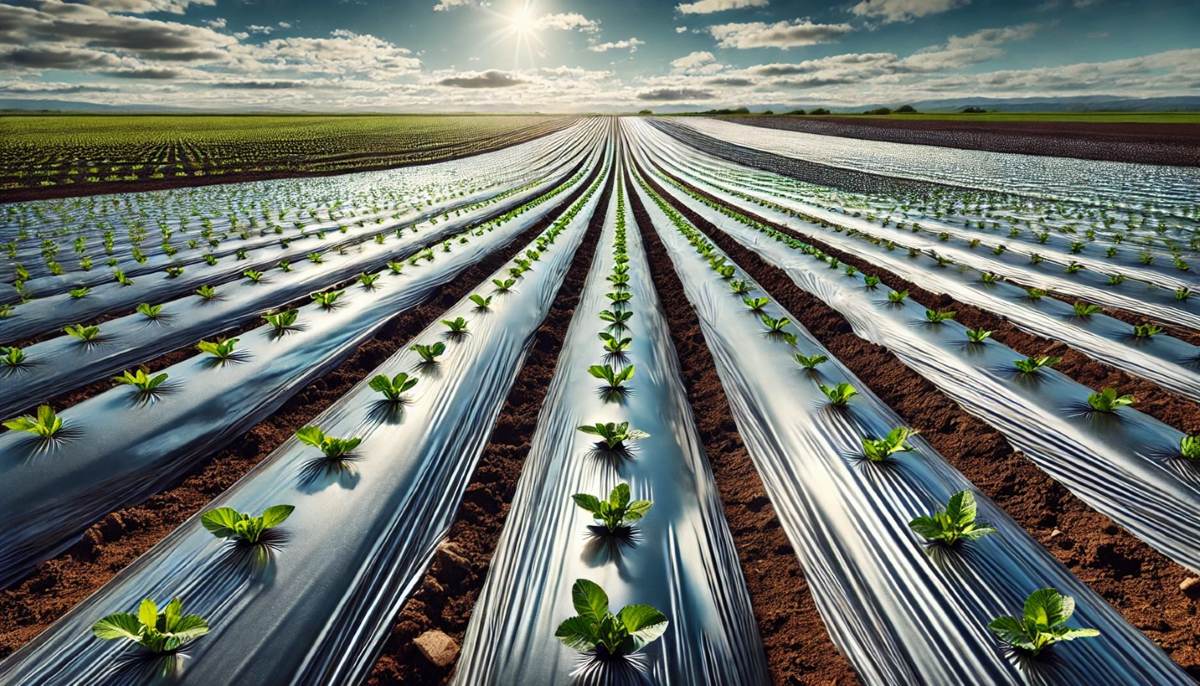Maximizing Agricultural Productivity with Mulch Films: A Game-Changer in Specialty and Engineering Films


Key Benefits of Mulch Films
Mulch films are widely utilized in various agricultural applications due to their numerous advantages:
· Water Conservation: Reduces evaporation, allowing for better water retention in the soil.
· Weed Suppression: Prevents sunlight from reaching weeds, reducing the need for herbicides.
· Temperature Regulation: Helps maintain optimal soil temperatures for root development.
· Enhanced Plant Growth: Reduces soil splashing and contamination, promoting healthier plants.
· Erosion Prevention: Protects soil from erosion due to wind and water.
· Early Crop Maturity: Mulch films accelerate plant growth, allowing farmers to harvest crops earlier and gain a competitive edge in the market.
Types of Polymers Used in Mulch Films
The choice of polymer affects the film’s performance, durability, and environmental impact. Some of the most commonly used polymeric materials include:
1. Metallocene Linear Low-Density Polyethylene (mLLDPE): A specialized version of LLDPE produced using metallocene catalysts, which allow precise control over the polymer structure.
Key properties responsible for engineering:
· Enhanced mechanical properties
· Superior puncture resistance,
· High tensile strength, and
· Improved elasticity.
Hence, mLLDPE mulch films are ideal for applications requiring high durability, flexibility, and reduced film thickness without sacrificing performance.
2. Low-Density Polyethylene (LDPE): A popular choice due to its flexibility, affordability, and effective moisture retention. UV stabilizers can be added to extend its lifespan.
3. Linear Low-Density Polyethylene (LLDPE): Provides superior mechanical strength, better puncture resistance, and improved flexibility compared to LDPE.
4. Ethylene Vinyl Acetate (EVA): Known for its elasticity and clarity, making it suitable for applications requiring light penetration.
5. Biodegradable Polymers
· Polylactic Acid - PLA,
· Polybutylene Adipate Terephthalate – PBAT
· Polyhydroxyalkanoates (PHA)
· Starch-based materials
These eco-friendly options decompose naturally, reducing plastic waste in agricultural environments.
Img Source: www.gminsights.com
Types of Mulch Films
1. Black Mulch Film - Effectively blocks sunlight, suppressing weed growth and conserving moisture.
2. White Mulch Film - Reflects sunlight, maintaining cooler soil temperatures and benefiting heat-sensitive crops.
3. Transparent Mulch Film - Increases soil temperature, ideal for crops requiring warm conditions.
4. Biodegradable Mulch Film - Made from biodegradable polymers like polylactic acid (PLA) and starch-based polymers, these films decompose naturally, reducing plastic waste.
5. Silver-Black Mulch Film - The silver side repels insects, while the black side prevents weed growth.
Img Source: www.gminsights.com
Best Polymer Recommendations for Mulch Films
Selecting the right polymer depends on various factors such as crop type, environmental conditions, and sustainability goals:
· For General Mulching: LDPE and LLDPE are cost-effective and durable options.
· For High-Strength Applications: LLDPE, mLLDPE, and mPE provide superior tear resistance and longevity.
· For Environmentally Friendly Farming: Biodegradable materials like PBAT and PLA help reduce plastic waste.
· For Increased Light Penetration: EVA or clear LDPE films are ideal for crops requiring more sunlight exposure.
· For Enhanced Durability and Thin Films: mLLDPE is recommended due to its ability to maintain high strength even at reduced thickness, making it an efficient and cost-effective choice for modern agriculture.
Get Involved
Have questions about how polymer resins can elevate your business? Or curious to see their impact in your industry? Let’s start a conversation in the comments below or reach out directly. The transformation is happening now—be a part of it!
Conclusion
The choice of polymer in mulch films affects their durability, efficiency, and sustainability. LDPE and LLDPE remain popular for their cost-effectiveness, while biodegradable options support eco-friendly farming. Metallocene-based polymers like mLLDPE and mPE enhance strength, allowing for thinner yet more durable films. Selecting the right material optimizes crop growth and resource use.